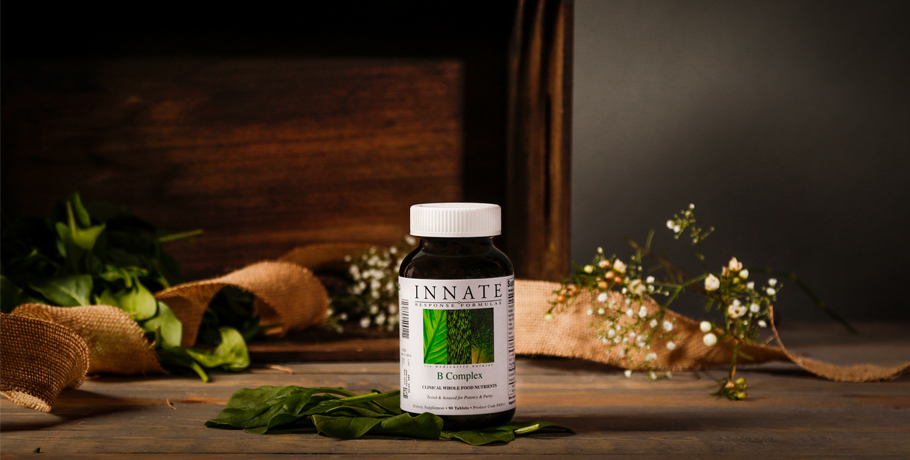
Here is the translation to English:
What is B Vitamin?
B vitamins are a group of eight water-soluble vitamins that are essential for the body's normal function and well-being. Each B vitamin plays a unique role in the body, but they often work together to support cell metabolism, energy production, and the function of the nervous system. The eight B vitamins include:
- B1 (thiamine)
- B2 (riboflavin)
- B3 (niacin)
- B5 (pantothenic acid)
- B6 (pyridoxine)
- B7 (biotin)
- B9 (folic acid or folate)
- B12 (cobalamin)
Are B vitamins found in food?
B vitamins are naturally found in a variety of foods. Examples of foods that contain B vitamins include:
- Meat, such as beef, pork, and lamb
- Fish and seafood, such as salmon, tuna, and shrimp
- Poultry, such as chicken and turkey
- Dairy products, such as milk, yogurt, and cheese
- Eggs
- Whole grains, such as bread, pasta, and rice. (Not recommended)
- Beans and lentils (Not recommended)
- Vegetables, such as spinach, broccoli, and potatoes
- Fruits, such as bananas, oranges, and avocados
Can you overdose on B vitamins?
Most B vitamins are water-soluble, meaning the body excretes any excess through urine. This makes it harder to overdose on these vitamins through diet alone. However, excessive intake of B vitamins can lead to side effects and negative health effects, such as skin redness, nausea, vomiting, and nerve damage. Therefore, it is important not to exceed the recommended doses when taking supplements.
The UL value (Upper Level or Tolerable Upper Intake Level) is a term used in nutrition science to indicate the highest daily amount of a nutrient that can be consumed without risking negative health effects. The UL value is determined by expert panels who assess available scientific research on nutrients and their potential risks. They take into account all known sources of the nutrient, including diet, supplements, and, in some cases, fortified foods. The UL value for different B vitamins is:
- Vitamin B1 (Thiamine): No UL registered. Negative health effects are unlikely even with high intake.
- Vitamin B2 (Riboflavin): No UL registered. Negative health effects are unlikely even with high intake.
- Vitamin B3 (Niacin – Nicotinic acid): 10 mg for nicotinic acid and 900 mg for nicotinamide
- Vitamin B6 (Pyridoxine): 25 mg
- Biotin: No UL registered. Negative health effects are unlikely even with high intake.
- Folic acid (folate): 1000 µg
- Vitamin B12 (Cobalamin): No UL registered. Negative health effects are unlikely even with high intake.
- Pantothenic acid: No UL registered. Negative health effects are unlikely even with high intake.
How much B vitamin do you need?
The need for B vitamins varies depending on age, sex, lifestyle, and health status. The recommended daily intake (RDI) for each B vitamin differs. Here are some examples of RDIs for adults:
- B1 (thiamine): 1.2 mg for men; 1.1 mg for women
- B2 (riboflavin): 1.3 mg for men; 1.1 mg for women
- B3 (niacin): 16 mg for men; 14 mg for women
- B5 (pantothenic acid): 5 mg for both men and women
- B6 (pyridoxine): 1.3-1.7 mg depending on age and gender
- B7 (biotin): 30 µg for both men and women
- B9 (folic acid): 400 µg for both men and women
- B12 (cobalamin): 2.4 µg for both men and women
Note that the RDI differs from the Optimal Daily Intake (ODI). The ODI is a measure indicating the amount of a nutrient needed to achieve optimal health, rather than just preventing deficiency diseases. The ODI takes into account factors such as genetics, stress, environment, and individual health conditions, meaning it is typically higher than the RDI. B vitamin supplements typically consider the ODI.
Can you experience side effects from B vitamins?
You can experience side effects from B vitamins, such as skin redness, nausea, vomiting, and nerve damage, with excessive intake. However, in most cases, B vitamins are water-soluble and are excreted through urine.
Sources & References
Livsmedelsverket: https://www.livsmedelsverket.se/livsmedel-och-innehall/naringsamne/vitaminer-och-antioxidanter/vitamin-b6
Hanna M, Jaqua E, Nguyen V, Clay J. Perm J. 2022 PMCID: PMC9662251.
